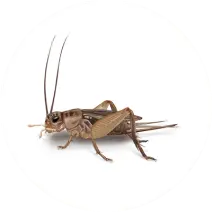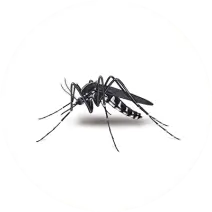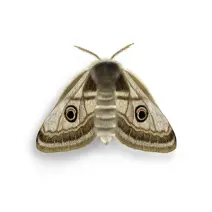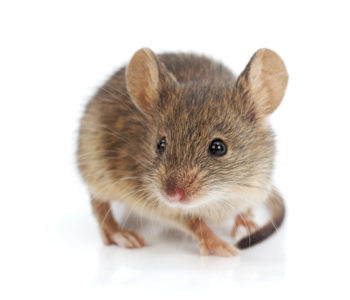Common Invading pest

Ants
Ants are social insects that belong to the order Hymenoptera and the family Formicidae. They evolved from vespoid wasp ancestors in the Cretaceous period. There are more than 13,800 species of ants that have been classified. Ants are known for their three distinct body regions: head, thorax, and abdomen, as well as antennae. Ants are eusocial insects that typically live in underground colonies, made up of workers and a queen. The colony is responsible for tasks such as foraging for food, caring for the young, and maintaining the nest . Ants will eat practically any kind of food but are especially attracted to sweets. Some ant species can also be dark brown, tan, or red colors .

BedBugs
Bed bugs are small, reddish-brown, blood-sucking, wingless insects that feed on the blood of humans and animals while they sleep. They are about the size of an apple seed. Bed bug bites usually clear up without treatment in a week or two. Bed bugs are not known to spread disease, but they can cause an allergic reaction or a severe skin reaction in some people. Bed bugs hide in the cracks and crevices of beds, box springs, headboards, bed frames, and other objects around a bed and come out at night to feed on their preferred host, humans. They can also be found in clothing, luggage, bedding, boxes, box springs, mattresses, upholstered furniture seams, under peeling paint and loose wallpaper, under carpeting near baseboards, under light switch plates or electrical outlets. Bed bug infestations usually occur around or near where people sleep. If you have bed bugs in your home, professional extermination is recommended.

Beetles
Beetles are insects that form the order Coleoptera (/koʊliːˈɒptərə/), in the superorder Endopterygota. Their front pair of wings are hardened into wing-cases, elytra, distinguishing them from most other insects. The Coleoptera, with about 400,000 described species, is the largest of all orders, constituting almost 40% of described insects and 25% of all known animal species; new species are discovered frequently, with estimates suggesting that there are between 0.9 and 2.1 million total species. Found in almost every habitat except the sea and the polar regions, they interact with their ecosystems in several ways: beetles often feed on plants and fungi, break down animal and plant debris, and eat other invertebrates. Some species are serious agricultural pests, such as the Colorado potato beetle, while others such as Coccinellidae (ladybirds or ladybugs) eat aphids, scale insects, thrips, and other plant-sucking insects that damage crops.

Centipedes
Centipedes are fast-moving, venomous, predatory, terrestrial arthropods that have long bodies and many jointed legs. Centipedes are found primarily in tropical climates, however, they are also widely distributed in temperate zones. Despite their name ‘centipede’ (which means 100 legs), all centipedes do not have 100 legs. Centipedes are invertebrates meaning ‘without a backbone or spinal column.

Cockroach
Cockroaches are insects belonging to the Blattodea order, which includes termites and mantids. They are ancient insects, with their ancestors originating during the Carboniferous period, some 320 million years ago. Cockroaches are somewhat generalized insects lacking special adaptations (such as the sucking true bugs); they have chewing mouthparts and are probably among the most primitive of living Neopteran insects. They are common and hardy insects capable of tolerating a wide range of temperatures, from heat to cold.
There are about 4,600 species of cockroaches worldwide, with 30 species associated with humans. Some species are well-known as pests, while others are inoffensive and live in a wide range of habitats around the world. The gregarious German cockroach is an example of a species with an elaborated social structure involving common shelter, social dependence, information transfer, and kin recognitio.
Cockroaches have appeared in human culture since classical antiquity. They are popularly depicted as dirty pests, although the majority of species are inoffensive and live in a wide range of habitats around the world.
I hope this helps!

Crickets
Crickets are insects that belong to the order Orthoptera and the family Gryllidae. They are related to bush crickets and grasshoppers . There are over 900 species of crickets that have been identified and described by scientists . Crickets have cylindrical, somewhat vertically flattened bodies, round heads, and long antennae. They have legs with 3-segmented tarsi, and the hind legs have enlarged femora, providing power for jumping. The front wings are adapted as tough, leathery elytra, and some crickets chirp by rubbing parts of these together. The hind wings are membranous and folded when not in use for flight; many species, however, are flightless. Crickets are mainly nocturnal and are best known for the loud, persistent chirping song of males trying to attract females. They occur in varied habitats from grassland, bushes, and forests to marshes, beaches, and caves. Crickets are celebrated in poems by William Wordsworth, John Keats, and Du Fu.

Earwigs
Earwigs make up the insect order Dermaptera. With about 2,000 species in 12 families, they are one of the smaller insect orders. Earwigs have characteristic cerci, a pair of forcep-like pincers on their abdomen, and membranous wings folded underneath short, rarely used forewings, hence the scientific order name, “skin wings”. Some groups are tiny parasites on mammals and lack the typical pincers. Earwigs are found on all continents except Antarctica.

Fleas
Fleas are small, wingless insects that feed on the blood of mammals and birds. They are external parasites that live on the exterior of their host. Fleas can be found in warm and humid environments, and they can be brought into homes by pets or humans. Fleas are known for their ability to jump long distances, which is facilitated by their strong legs. Fleas can cause discomfort, itchiness, and irritation when they bite humans or pets. Flea bites can also cause an allergic reaction in some people, leading to hives, swelling, and intense itching. Fleas can transmit diseases such as flea-borne typhus, plague, or cat scratch disease to humans or pets. If you suspect a flea infestation in your home, it is important to take prompt action to get rid of them. Some tips for getting rid of fleas include vacuuming, dusting, washing all bedding, using topical treatments on pets, and more.

House fly
Flies are insects of the order Diptera, the name being derived from the Greek δι- di- “two”, and πτερόν pteron “wing”. Insects of this order use only a single pair of wings to fly, the hindwings having evolved into advanced mechanosensory organs known as halteres, which act as high-speed sensors of rotational movement and allow dipterans to perform advanced aerobatics. Diptera is a large order containing an estimated 1,000,000 species including horse-flies, crane flies, hoverflies, mosquitoes and others, although only about 125,000 species have been described.
Flies have a mobile head, with a pair of large compound eyes, and mouthparts designed for piercing and sucking (mosquitoes, black flies and robber flies), or for lapping and sucking in the other groups. Their wing arrangement gives them great maneuverability in flight, and claws and pads on their feet enable them to cling to smooth surfaces. Flies undergo complete metamorphosis; the eggs are often laid on the larval food-source and the larvae, which lack true limbs, develop in a protected environment, often inside their food source. Other species like Metopia argyrocephala are ovoviviparous, opportunistically depositing hatched or hatching maggots instead of eggs on carrion, dung, decaying material, or open wounds of mammals. The pupa is a tough capsule from which the adult emerges when ready to do so; flies mostly have short lives as adults.

Millipedes
Millipedes (from Latin millepeda, meaning “wood louse”, which in turn is from Latin mille, “thousand”, and pes, “foot”)are a group of arthropods that are characterised by having two pairs of jointed legs on most body segments; they are known scientifically as the class Diplopoda, the name derived from this feature. Each double-legged segment is a result of two single segments fused together. Most millipedes have very elongated cylindrical or flattened bodies with more than 20 segments, while pill millipedes are shorter and can roll into a tight ball. Although the name “millipede” derives from Latin for “thousand feet”, no species was known to have 1,000 or more until the discovery in 2020 of Eumillipes persephone, which can have over 1,300 legs. There are approximately 12,000 named species classified into 16 orders and around 140 families, making Diplopoda the largest class of myriapods, an arthropod group which also includes centipedes and other multi-legged creatures.
Most millipedes are slow-moving detritivores, eating decaying leaves and other dead plant matter. Some eat fungi or drink plant fluids, and a small number are predatory. Millipedes are generally harmless to humans, although some can become household or garden pests. Millipedes can be an unwanted nuisance particularly in greenhouses where they can potentially cause severe damage to emergent seedlings. Most millipedes defend themselves with a variety of chemicals secreted from pores along the body, although the tiny bristle millipedes are covered with tufts of detachable bristles. Its primary defence mechanism is to curl into a tight coil, thereby protecting its legs and other vital delicate areas on the body behind a hard exoskeleton.

Mites
There are thousands of mite species, the majority of which measure less than 1 mm in length. Like other arachnids, their bodies are comprised of the prosoma and abdomen. Mites bear four pairs of legs. Mites are small arachnids (eight-legged arthropods). Mites span two large orders of arachnids, the Acariformes and the Parasitiformes, which were historically grouped together in the subclass Acari. However, most recent genetic analyses do not recover the two as each other’s closest relative within Arachnida, rendering the group non-monophyletic. Most mites are tiny, less than 1 mm (0.04 in) in length, and have a simple, unsegmented body plan. The small size of most species makes them easily overlooked; some species live in water, many live in soil as decomposers, others live on plants, sometimes creating galls, while others again are predators or parasites. This last type includes the commercially destructive Varroa parasite of honey bees, as well as scabies mites of humans. Most species are harmless to humans, but a few are associated with allergies or may transmit diseases.
The scientific discipline devoted to the study of mites is called acarology.

Mosquitos
Mosquitoes belong to the same group as the true flies, Diptera. As such, they have a single pair of wings. They typically have long, thin legs and a head featuring a prominent proboscis. Mosquito bodies and wings most often are covered in tiny scales. Adult sizes may range from 3 to 9 mm.

Moths
Moths vary dramatically in appearance and size depending on the species. Some are massive and others tiny. Moths typically have two pairs of wings covered in scales, a coiled proboscis, and large compound eyes. Certain species of moths are brilliant with metallic colors while other are drab in browns or grey. Most indoor infesting moths are smaller than 2 cm wingspan and often are shades of grey or brown to reddish brown.

House Mice
The house mouse (Mus musculus) is a small mammal of the order Rodentia, characteristically having a pointed snout, large rounded ears, and a long and almost hairless tail. It is one of the most abundant species of the genus Mus. Although a wild animal, the house mouse has benefited significantly from associating with human habitation to the point that truly wild populations are significantly less common than the semi-tame populations near human activity.

Silverfish
The silverfish is a nocturnal insect typically 13–25 mm (0.5–1.0 in) long.Its abdomen tapers at the end, giving it a fish-like appearance. The newly hatched are whitish, but develop a greyish hue and metallic sheen as they get older. It has two long cerci and one terminal filament at the tip of the abdomen between the cerci. It also has two small compound eyes, although other members of Zygentoma are eyeless, such as the family Nicoletiidae.
The silverfish, like other species in Apterygota, is wingless. It has long antennae, and moves in a wiggling motion that resembles the movement of a fish. This, coupled with its appearance and silvery scales, inspires its common name. Silverfish can regenerate lost terminal filaments and antennae within four weeks. Silverfish typically live for up to three years.
The silverfish is an agile runner. It avoids light.

Spiders
Tens of thousands of spider species have been identified throughout the world. These arachnids have eight legs, two body segments, and no wings or antennae. Spiders have three or four pairs of eyes. Many spiders have poor vision, but some species of spiders, such as the jumping spider, have exceptional vision.

Stink Bugs
Stink bug or stinkbug is a common name for several insects and may refer to:
- Any of several bugs in the true bug (hemipteran) family Pentatomidae
- Halyomorpha halys, or brown marmorated stink bug
- Chinavia hilaris, or green stink bug
- Boisea trivittata, or boxelder bug
- Scutelleridae, or jewel stinkbugs
- Eleodes, or stink beetles, a genus in the darkling beetle family

Termites
Termites are usually small, measuring between 4 and 15 millimetres (3⁄16 and 9⁄16 in) in length. The largest of all extant termites are the queens of the species Macrotermes bellicosus, measuring up to over 10 centimetres (4 in) in length. Another giant termite, the extinct Gyatermes styriensis, flourished in Austria during the Miocene and had a wingspan of 76 millimetres (3 in) and a body length of 25 millimetres (1 in).

Ticks
Ticks (order Ixodida) are parasitic arachnids that are part of the mite superorder Parasitiformes. Adult ticks are approximately 3 to 5 mm in length depending on age, sex, species, and “fullness”. Ticks are external parasites, living by feeding on the blood of mammals, birds, and sometimes reptiles and amphibians. The timing of the origin of ticks is uncertain, though the oldest known tick fossils are from the Cretaceous period, around 100 million years old. Ticks are widely distributed around the world, especially in warm, humid climates.

Wasp
A wasp is a winged insect that belongs to the order Hymenoptera and has a slender, smooth body and legs with few hairs. It is not a bee or an ant, although they are related. Some wasps have a narrow stalk between the thorax and abdomen, while others have a broad connection. Wasps can have biting mouthparts and a sting, and they can be social or solitare. There are many species and sizes of wasps
